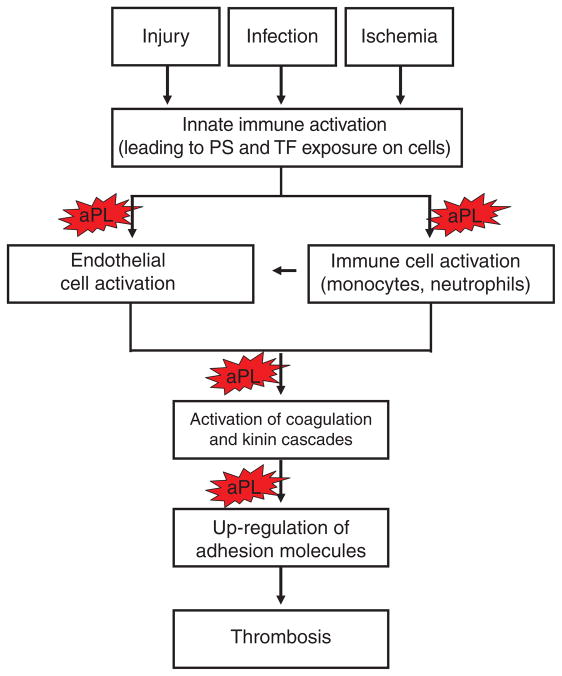Figure 3.
Role of innate immunity in the ‘effector phase’ of APS. This figure outlines the interplay between innate immunity and antiphospholipid antibodies (aPL). A stimulus of innate immunity (e.g. injury, infection, or ischemia) induces the exposure of negatively charged phospholipid (PS), i.e. phosphatidyl-serine, and tissue factor (TF) on the surface of vascular cells, resulting in binding of coagulation proteins and other phospholipid-binding proteins (e.g. β2-glycoprotein I) and subsequent recognition of cells by circulating aPL. aPL have been proposed to affect a number of steps in this process, including cellular activation, activation of the coagulation and kinin cascades, and up-regulation of adhesion molecules, all resulting in enhanced thrombogenicity.

